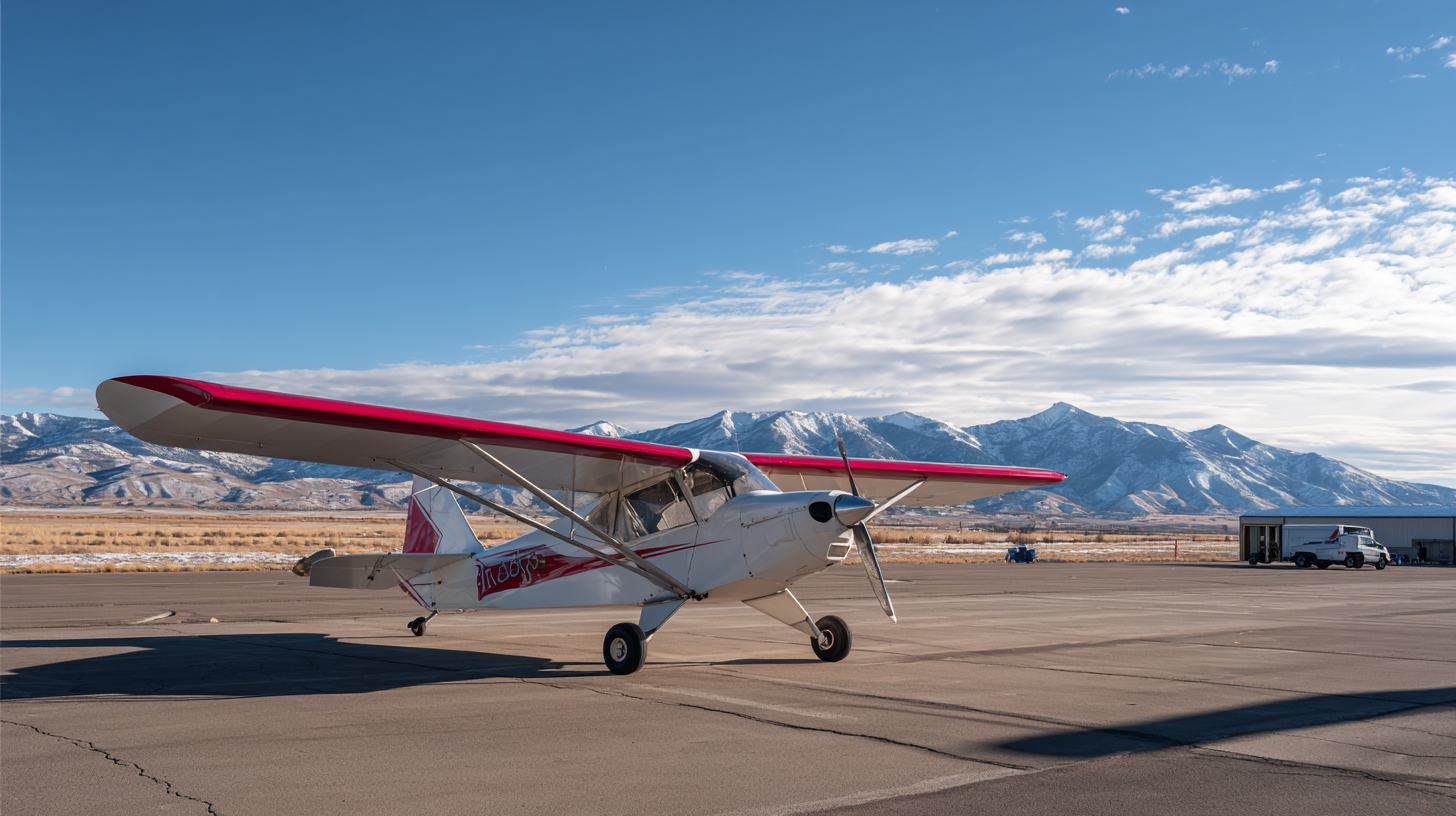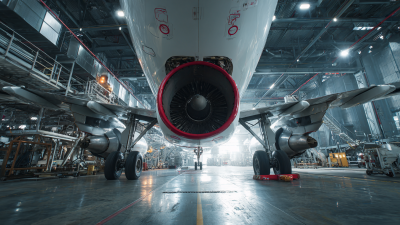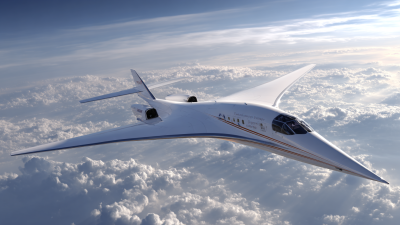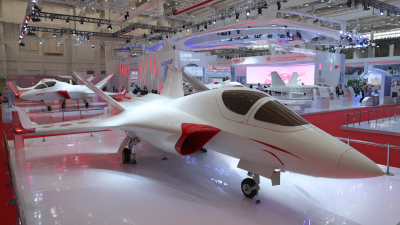Building Your Dreams: A Comprehensive Guide to DIY Kit Aircraft for Aviation Enthusiasts
In recent years, the popularity of kit aircraft has seen remarkable growth, reflecting a burgeoning interest in personal aviation among enthusiasts. According to the General Aviation Manufacturers Association, the homebuilt segment represented approximately 25% of all general aviation aircraft registrations in the United States in 2022. This surge in interest can be attributed to the allure of building customized flying machines, alongside the decreasing costs of materials and advancements in technology that simplify the construction process.
 Moreover, the growing community of builders and numerous online resources have made it easier than ever for aviation enthusiasts to embark on their journey into the world of DIY aircraft. As the kit aircraft market continues to expand, this comprehensive guide serves as an invaluable resource for those eager to turn their dreams of flight into reality, navigating through the various options available and providing essential tips to ensure a successful build.
Moreover, the growing community of builders and numerous online resources have made it easier than ever for aviation enthusiasts to embark on their journey into the world of DIY aircraft. As the kit aircraft market continues to expand, this comprehensive guide serves as an invaluable resource for those eager to turn their dreams of flight into reality, navigating through the various options available and providing essential tips to ensure a successful build.
Essential Tools and Materials for DIY Kit Aircraft Construction
When embarking on the journey of building your own DIY kit aircraft, having the right tools and materials is crucial. Start with the basics: a quality set of hand tools including screwdrivers, wrenches, and pliers. These will facilitate the assembly process, allowing for precision and ease. Additionally, investing in higher-end tools such as a powered drill and a rivet gun can significantly streamline tasks like installing fittings and securing components. Alongside these tools, a sturdy workbench and adequate lighting will create an efficient workspace, ensuring that your project remains organized and accessible.
Materials play an equally important role in the construction of your aircraft. Depending on the kit you choose, you will need high-grade aluminum, composite materials, or even wood for certain sections. Always ensure that these materials meet the safety and quality standards specified by the kit manufacturer. Don’t forget to stock up on essential fasteners and adhesives, as these components are critical for ensuring your aircraft's structural integrity. With the right combination of tools and materials, you will be well-equipped to bring your aviation dreams to life.
Step-by-Step Guide to Selecting the Right Aircraft Kit for You
When embarking on the journey of building your own aircraft, selecting the right DIY kit is crucial. Initially, consider your level of experience; different kits are designed for varying skill levels, from beginner to advanced builders. Beginners might opt for simpler kits that require minimal tools and skills, allowing them to gain confidence before tackling more complex projects. It's also important to assess the type of aircraft you wish to build, whether it's a light sport aircraft, a homebuilt aircraft, or something else, as this will significantly influence your kit selection.

Next, evaluating the support and community surrounding the aircraft kit is essential. Look for manufacturers that offer comprehensive resources such as detailed manuals, instructional videos, and access to builders' forums. This support can be invaluable when facing challenges during the construction process. Additionally, consider the availability of spare parts and accessories to ensure you can maintain your aircraft effectively after completion. With careful consideration of these factors, you can make a well-informed decision that aligns with your aspirations as an aviation enthusiast.
Top Safety Tips Every DIY Aircraft Builder Should Follow
Building your own aircraft is an exhilarating venture, yet it comes with its inherent risks. According to the Aircraft Safety Foundation, approximately 80% of accidents in general aviation stem from pilot error, underscoring the importance of proper safety measures during the building phase. Aspiring DIY aircraft builders must adhere to stringent safety protocols, including thorough research of aircraft design principles and meticulous planning of each construction step. Utilizing resources such as the FAA's experimental aircraft guidelines can help ensure that builders remain informed about necessary regulations and safety standards.
Another critical safety tip is the proper selection of materials and components. The Experimental Aircraft Association (EAA) recommends using only certified components that meet industry standards to minimize the risk of structural failure. Regular inspections throughout the building process are vital; performing systematic checks can catch potential issues before they escalate. Furthermore, enrolling in hands-on workshops or joining local aviation clubs can enhance your understanding of safe building practices. Engaging with experienced builders allows for the exchange of valuable knowledge and tips that can significantly improve safety outcomes in your aircraft construction journey.
Building Your Dreams: A Comprehensive Guide to DIY Kit Aircraft for Aviation Enthusiasts - Top Safety Tips Every DIY Aircraft Builder Should Follow
| Aspect | Details |
|---|---|
| Aircraft Type | High-wing monoplane |
| Material | Aluminum and composite |
| Engine Type | Four-stroke air-cooled |
| Wingspan | 30 feet |
| Pilot Requirements | Private pilot license |
| Assembly Time | Approximately 600 hours |
| Safety Gear | Helmet, gloves, eye protection |
| Inspection Steps | Pre-flight check, structural integrity check |
| Recommended Resources | Construction manuals, online forums, local workshops |
| Regulatory Compliance | Follow FAA guidelines |
Common Challenges in Building Kit Aircraft and How to Overcome Them
 Building a kit aircraft can be a rewarding endeavor, yet it's not without its challenges. According to the Experimental Aircraft Association (EAA), nearly 70% of kit builders report facing significant obstacles during the assembly process. Common issues include incomplete kits, poorly written instructions, and difficulties sourcing specific parts, which can lead to frustration and delays. Many builders suggest that having access to a well-organized workshop and a network of fellow enthusiasts can mitigate these problems, allowing builders to share tips and resources more efficiently.
Building a kit aircraft can be a rewarding endeavor, yet it's not without its challenges. According to the Experimental Aircraft Association (EAA), nearly 70% of kit builders report facing significant obstacles during the assembly process. Common issues include incomplete kits, poorly written instructions, and difficulties sourcing specific parts, which can lead to frustration and delays. Many builders suggest that having access to a well-organized workshop and a network of fellow enthusiasts can mitigate these problems, allowing builders to share tips and resources more efficiently.
In addition to logistical challenges, technical hurdles can also arise during the construction of kit aircraft. A report from the National Association of Flight Instructors indicates that recognizing and addressing mechanical issues early—such as alignment problems or wiring inconsistencies—can save builders time and money in the long run. Utilizing online forums and engaging with local aviation clubs can foster a support system that provides not only camaraderie but also practical advice, thereby enhancing the overall building experience. Ultimately, learning from the experiences of others is key to overcoming the inevitable challenges that come with taking on such an ambitious project.
Must-Know Maintenance Tips for Your Completed DIY Aircraft
When delving into the world of DIY kit aircraft, one must emphasize the importance of maintenance for ensuring safety and optimal performance. Recent developments, such as the establishment of a maintenance, repair, and overhaul (MRO) facility at Biju Patnaik International Airport, indicate a growing recognition of the need for localized support services. Such facilities will enhance the safety net for DIY builders by providing essential repair and maintenance resources, which is critical for kit aircraft that often require specialized knowledge and expertise.
Cost considerations are also crucial for maintaining aircraft like the Cessna 172, where annual maintenance expenses can fluctuate significantly based on factors such as model year and mission profile. Reports indicate that the average annual maintenance cost can range from $2,500 to $5,000, highlighting the financial commitment needed for proper upkeep. With the emergence of digital technologies, maintenance personnel are increasingly equipped with predictive analytics tools that can preemptively address issues, potentially reducing downtime and costs associated with traditional repair methods. This forward-thinking approach is vital for DIY aircraft owners looking to maximize the longevity and reliability of their builds.
Building Your Dreams: DIY Aircraft Maintenance Tips
Related Posts
-

Understanding the Evolution of Aircraft Service: From Maintenance to Passenger Experience
-

Exploring the Future of Fuel System Aviation at the 138th Canton Fair 2025
-

Exploring the Future of Fuel Injection Aircraft: Innovations and Advancements in Aviation Technology
-

Innovative Aviation Kits Showcase Opportunities at the 2025 China Import and Export Fair
-

Exploring the Future of Fuel System Aviation Innovations and Sustainability
-

5 Best Solutions for Exceptional Aircraft Service Efficiency
